-
 Bitcoin
Bitcoin $107,247.2038
-0.18% -
 Ethereum
Ethereum $2,424.7947
0.34% -
 Tether USDt
Tether USDt $1.0003
-0.02% -
 XRP
XRP $2.1171
-3.33% -
 BNB
BNB $645.6618
0.06% -
 Solana
Solana $141.5898
-1.32% -
 USDC
USDC $0.9998
0.00% -
 TRON
TRON $0.2710
-0.41% -
 Dogecoin
Dogecoin $0.1602
-2.99% -
 Cardano
Cardano $0.5553
-2.28% -
 Hyperliquid
Hyperliquid $36.3019
-2.42% -
 Bitcoin Cash
Bitcoin Cash $491.7212
2.04% -
 Chainlink
Chainlink $13.0810
-0.23% -
 Sui
Sui $2.6080
-5.06% -
 UNUS SED LEO
UNUS SED LEO $9.0040
-0.05% -
 Stellar
Stellar $0.2350
-3.06% -
 Avalanche
Avalanche $17.2294
-2.31% -
 Toncoin
Toncoin $2.8075
-1.05% -
 Shiba Inu
Shiba Inu $0.0...01121
-3.43% -
 Litecoin
Litecoin $84.2215
-0.32% -
 Hedera
Hedera $0.1429
-4.88% -
 Monero
Monero $312.2199
-0.90% -
 Dai
Dai $0.9997
-0.01% -
 Ethena USDe
Ethena USDe $0.9999
-0.02% -
 Polkadot
Polkadot $3.2973
-2.60% -
 Bitget Token
Bitget Token $4.4742
3.12% -
 Pi
Pi $0.5631
-10.10% -
 Uniswap
Uniswap $6.7817
-2.06% -
 Pepe
Pepe $0.0...09252
-3.74% -
 Aave
Aave $251.3830
-2.24%
Does the purchase of USDT support multiple payment methods? Which one is the most cost-effective?
USDT purchase costs vary by method: credit/debit cards are fast but pricey, bank transfers are cheaper but slower, and P2P trading offers good rates but higher risks.
Mar 28, 2025 at 04:56 pm
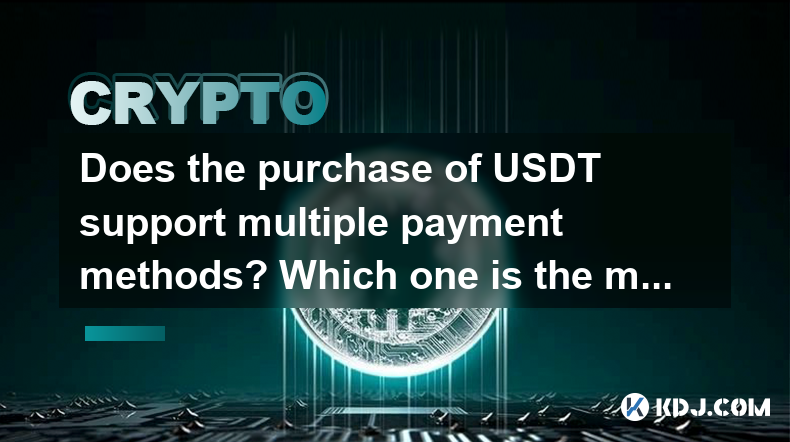
Exploring USDT Purchase Options and Costs
The purchase of Tether (USDT), a popular stablecoin pegged to the US dollar, offers various payment methods, each with its own associated costs and benefits. The availability of specific methods depends heavily on the exchange or platform you choose. There's no single "best" method, as cost-effectiveness is relative to your individual circumstances and the platform used.
Many centralized exchanges support a wide range of payment options. These typically include:
Credit/Debit Cards: Convenient but often incur higher fees due to processing charges levied by payment processors. Expect higher transaction fees and potentially less favorable exchange rates.
Bank Transfers (Wire Transfers): Generally offer lower fees compared to credit/debit cards, but processing times are significantly longer. They often require higher minimum deposit amounts.
P2P (Peer-to-Peer) Trading: This involves directly trading fiat currency for USDT with another individual. While potentially offering competitive rates, it carries higher risks related to scams and security. Thorough due diligence is crucial.
Cryptocurrency Exchanges: You can exchange other cryptocurrencies you already own for USDT. This method avoids fiat currency transactions entirely, but involves the costs associated with trading your existing cryptocurrency. The fees vary wildly based on the exchange.
E-Wallets (e.g., PayPal, Skrill): Some platforms might support these, but they usually come with higher fees than bank transfers. Availability varies significantly depending on the exchange and your region.
The cost-effectiveness of each method hinges on several factors:
Transaction Fees: Each payment method has associated fees charged by the payment processor, the exchange, or both. These fees can vary significantly.
Exchange Rates: The exchange rate between your fiat currency and USDT can fluctuate, impacting the overall cost. Look for platforms with competitive exchange rates.
Processing Time: Faster methods like credit/debit cards might be more convenient but cost more. Slower methods like bank transfers might save you money but require more patience.
Minimum Deposit/Withdrawal Amounts: Some methods have minimum transaction amounts, which can make them unsuitable for smaller purchases.
Finding the most cost-effective method requires careful comparison across different platforms. Check the fee schedules of multiple exchanges before making a decision. Remember that advertised fees might not include all applicable charges. Always factor in potential hidden fees or unfavorable exchange rates.
Understanding the Nuances of Different Payment Methods
Let's delve deeper into the specific characteristics of each payment method to further illuminate the cost-effectiveness aspect.
Credit/Debit Cards: The speed and convenience are undeniable. However, high transaction fees are the significant drawback. These fees can range from a fixed percentage of the transaction amount to a combination of fixed and percentage-based fees. Furthermore, some platforms might apply additional markup to the exchange rate, further increasing the cost.
Bank Transfers: While slower, bank transfers generally offer lower fees compared to credit/debit cards. The fees are often fixed or a small percentage of the transaction, but processing times can range from a few hours to several business days. The speed depends on the banks involved and the efficiency of their interbank transfer systems.
P2P Trading: This method offers the potential for highly competitive exchange rates, potentially making it the most cost-effective option. However, it introduces significant risks. You're dealing directly with individuals, increasing the chance of scams or fraudulent activities. Always prioritize security and conduct thorough background checks before engaging in P2P transactions.
Cryptocurrency Exchanges: If you already own cryptocurrencies, exchanging them for USDT might be the most efficient and cost-effective method. However, you still need to consider the trading fees associated with the exchange. These fees vary considerably between exchanges, so researching different options is crucial.
E-Wallets: E-wallets like PayPal or Skrill offer a relatively convenient method, but fees are often higher than bank transfers. Additionally, the availability of this option varies greatly depending on the exchange and your geographical location. Many exchanges do not support e-wallet deposits for USDT purchases.
Factors Influencing Cost-Effectiveness
Beyond the inherent costs of each payment method, several external factors influence the overall cost-effectiveness of your USDT purchase:
Exchange Selection: Different exchanges offer different fees and exchange rates. Choosing a reputable exchange with competitive fees is critical.
Transaction Volume: For larger transactions, the percentage-based fees associated with some methods become more significant.
Regional Regulations: Regulations in your region might impact the availability of certain payment methods and influence the associated costs.
Market Volatility: Fluctuations in the cryptocurrency market can affect the actual cost of your USDT purchase, regardless of the payment method used.
The most cost-effective method ultimately depends on your specific needs and circumstances. A thorough comparison of fees, exchange rates, processing times, and associated risks across different platforms is necessary to make an informed decision.
Frequently Asked Questions
Q: Are there any hidden fees when buying USDT?
A: Yes, some platforms might have hidden fees or unfavorable exchange rates not explicitly stated in their fee schedules. Always carefully review the complete fee structure before proceeding.
Q: Which payment method is generally fastest for buying USDT?
A: Credit/debit cards usually offer the fastest transaction times, but they often come with higher fees.
Q: How can I minimize the cost when buying USDT?
A: Compare fees and exchange rates across multiple platforms, consider using bank transfers for larger amounts, and be wary of P2P trading risks.
Q: Is it safe to buy USDT using P2P platforms?
A: P2P trading carries inherent risks. Use reputable platforms with escrow services and conduct thorough due diligence on the counterparty.
Q: What are the typical fees for buying USDT with a bank transfer?
A: Fees vary by platform but are generally lower than credit/debit card fees. Check the specific exchange's fee schedule.
Q: Can I buy USDT anonymously?
A: While some P2P platforms offer a degree of anonymity, most regulated exchanges require KYC (Know Your Customer) procedures, making complete anonymity difficult.
Q: What happens if the exchange rate changes during my USDT purchase?
A: The final exchange rate will depend on the platform's policies. Some platforms lock in the rate at the time of order placement, while others might use the rate at the time of transaction completion.
Disclaimer:info@kdj.com
The information provided is not trading advice. kdj.com does not assume any responsibility for any investments made based on the information provided in this article. Cryptocurrencies are highly volatile and it is highly recommended that you invest with caution after thorough research!
If you believe that the content used on this website infringes your copyright, please contact us immediately (info@kdj.com) and we will delete it promptly.
- Ruvi AI vs. Tron: The Race to the $1 Mark and Beyond
- 2025-06-27 06:50:12
- Bitcoin, Ethereum, and Inflation Data: Navigating the Crypto Landscape
- 2025-06-27 06:55:12
- UAE, Crypto, and Trump: A Surprising Intersection in 2025
- 2025-06-27 06:55:12
- BTC Bull Token: Price Prediction and the 50x Potential
- 2025-06-27 06:57:14
- Moonveil's $MORE Token Launching on CEXs: A New Era for Web3 Gaming
- 2025-06-27 06:31:58
- Crypto Presales in 2025: MAGACOIN FINANCE and the Hunt for New Coins
- 2025-06-27 04:50:12
Related knowledge
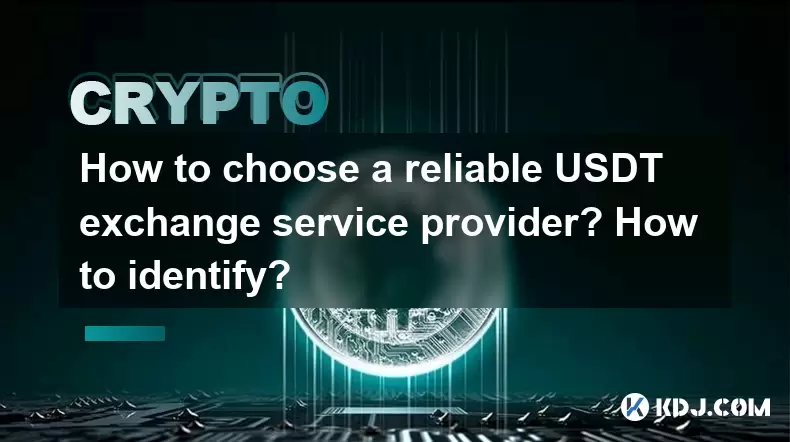
How to choose a reliable USDT exchange service provider? How to identify?
Jun 12,2025 at 03:15pm
Understanding the Role of USDT in Cryptocurrency TradingUSDT (Tether) is one of the most widely used stablecoins in the cryptocurrency market. It is designed to maintain a 1:1 peg with the U.S. dollar, offering traders and investors a way to hedge against volatility while remaining within the crypto ecosystem. Choosing a reliable USDT exchange service p...
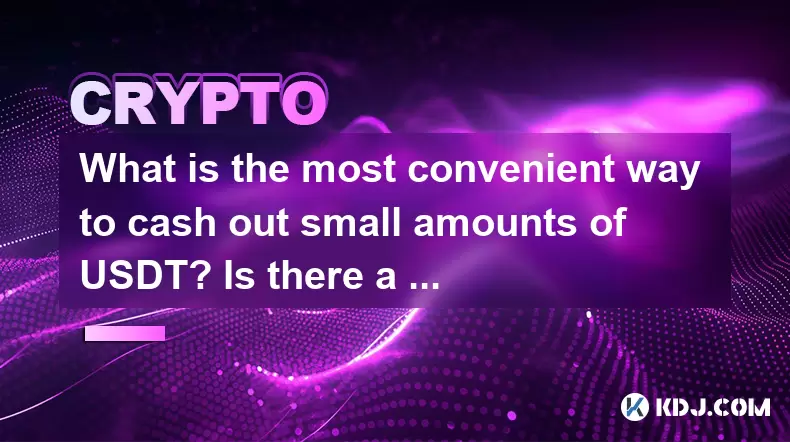
What is the most convenient way to cash out small amounts of USDT? Is there a shortcut?
Jun 11,2025 at 11:00pm
Understanding the Need to Cash Out Small USDT AmountsCashing out small amounts of USDT can be a challenge for many crypto users. Traditional methods often involve high fees, minimum withdrawal limits, or cumbersome verification processes that make it inefficient for small transactions. The key is to find a method that balances speed, cost, and convenien...
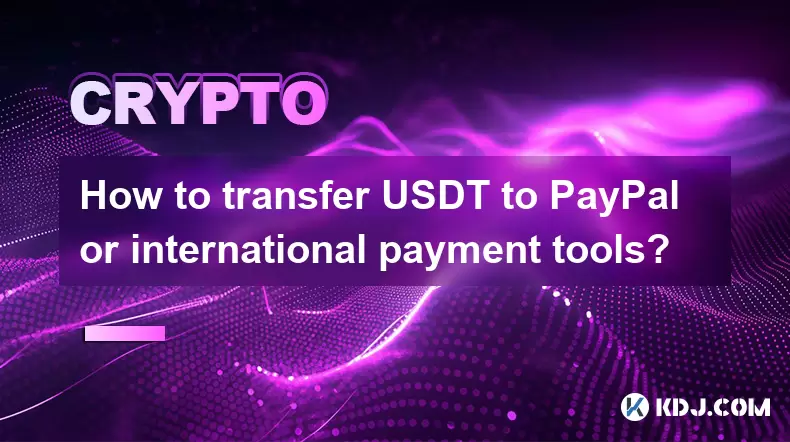
How to transfer USDT to PayPal or international payment tools?
Jun 15,2025 at 05:28am
Understanding the Basics of USDT and PayPal IntegrationUSDT (Tether) is a stablecoin pegged to the US dollar, offering blockchain-based value transfer with minimal volatility. PayPal, on the other hand, is a centralized digital wallet that facilitates fiat currency transactions globally. Direct integration between USDT and PayPal does not exist due to t...
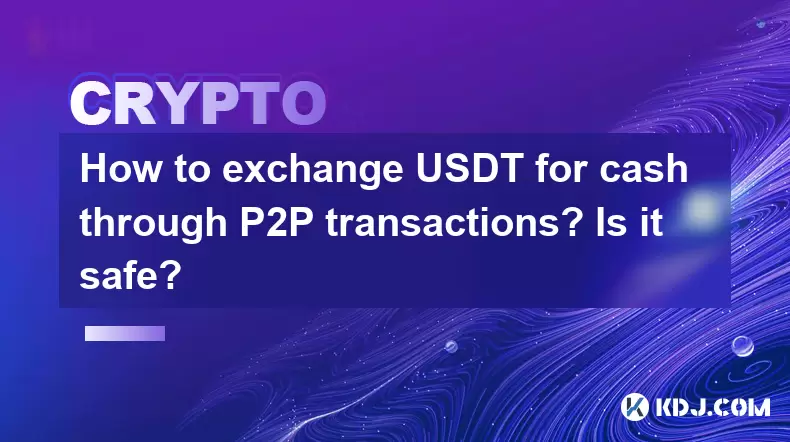
How to exchange USDT for cash through P2P transactions? Is it safe?
Jun 18,2025 at 07:56am
Understanding USDT and P2P TransactionsTether (USDT) is a stablecoin pegged to the value of the US dollar, making it a popular choice for users who want to avoid the volatility of other cryptocurrencies while still participating in the crypto ecosystem. Peer-to-peer (P2P) transactions allow individuals to trade directly with each other without going thr...
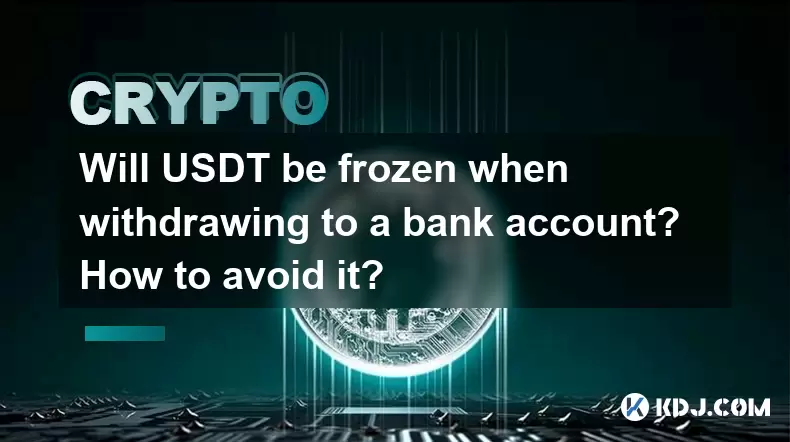
Will USDT be frozen when withdrawing to a bank account? How to avoid it?
Jun 15,2025 at 10:03am
Understanding USDT Withdrawals and Bank Account Freezing RisksWhen users decide to withdraw USDT (Tether) to a bank account, one of the most common concerns is whether their funds will be frozen during the process. This concern stems from real-life cases where individuals have encountered delays or restrictions when converting digital assets into fiat c...
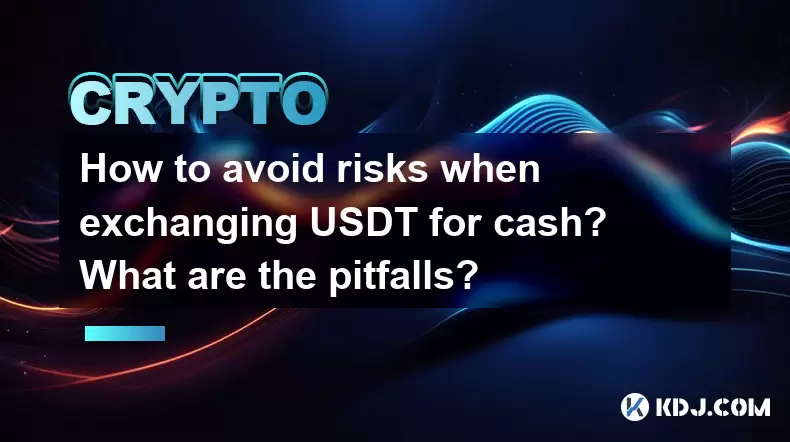
How to avoid risks when exchanging USDT for cash? What are the pitfalls?
Jun 11,2025 at 08:14pm
Understanding the Risks of Exchanging USDT for CashWhen exchanging USDT (Tether) for cash, users must be aware of the potential risks involved. As a stablecoin pegged to the US dollar, USDT is widely used in crypto transactions due to its price stability. However, converting it into fiat currency like USD or CNY can expose users to several pitfalls, inc...

How to choose a reliable USDT exchange service provider? How to identify?
Jun 12,2025 at 03:15pm
Understanding the Role of USDT in Cryptocurrency TradingUSDT (Tether) is one of the most widely used stablecoins in the cryptocurrency market. It is designed to maintain a 1:1 peg with the U.S. dollar, offering traders and investors a way to hedge against volatility while remaining within the crypto ecosystem. Choosing a reliable USDT exchange service p...

What is the most convenient way to cash out small amounts of USDT? Is there a shortcut?
Jun 11,2025 at 11:00pm
Understanding the Need to Cash Out Small USDT AmountsCashing out small amounts of USDT can be a challenge for many crypto users. Traditional methods often involve high fees, minimum withdrawal limits, or cumbersome verification processes that make it inefficient for small transactions. The key is to find a method that balances speed, cost, and convenien...

How to transfer USDT to PayPal or international payment tools?
Jun 15,2025 at 05:28am
Understanding the Basics of USDT and PayPal IntegrationUSDT (Tether) is a stablecoin pegged to the US dollar, offering blockchain-based value transfer with minimal volatility. PayPal, on the other hand, is a centralized digital wallet that facilitates fiat currency transactions globally. Direct integration between USDT and PayPal does not exist due to t...

How to exchange USDT for cash through P2P transactions? Is it safe?
Jun 18,2025 at 07:56am
Understanding USDT and P2P TransactionsTether (USDT) is a stablecoin pegged to the value of the US dollar, making it a popular choice for users who want to avoid the volatility of other cryptocurrencies while still participating in the crypto ecosystem. Peer-to-peer (P2P) transactions allow individuals to trade directly with each other without going thr...

Will USDT be frozen when withdrawing to a bank account? How to avoid it?
Jun 15,2025 at 10:03am
Understanding USDT Withdrawals and Bank Account Freezing RisksWhen users decide to withdraw USDT (Tether) to a bank account, one of the most common concerns is whether their funds will be frozen during the process. This concern stems from real-life cases where individuals have encountered delays or restrictions when converting digital assets into fiat c...

How to avoid risks when exchanging USDT for cash? What are the pitfalls?
Jun 11,2025 at 08:14pm
Understanding the Risks of Exchanging USDT for CashWhen exchanging USDT (Tether) for cash, users must be aware of the potential risks involved. As a stablecoin pegged to the US dollar, USDT is widely used in crypto transactions due to its price stability. However, converting it into fiat currency like USD or CNY can expose users to several pitfalls, inc...
See all articles
























































































